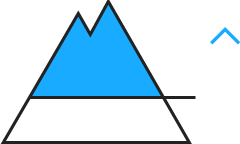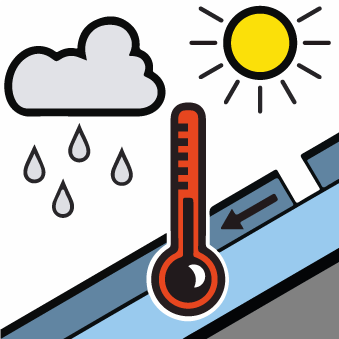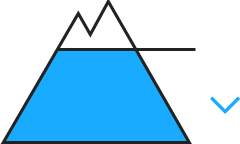
Danger level
 | treeline
|
Avalanche Problem
 | | New snow |
|  | |  |
 | | Wind-drifted snow |
|  | |  |

Natural avalanches are likely to occur.
New snow and wind slabs above the tree line.
New snow and wind slabs above the tree line.
Snowpack
dp.5: snowfall after a long period of cold
dp.6: cold, loose snow and wind
The snowpack is faceted; its surface consists of loosely bonded snow.
Tendency

Danger level
 | treeline
|
Avalanche Problem
 | | Wind-drifted snow |
|  | |  |
 | | Wet snow |
|  | |  |

Fresh and older wind slabs in the high Alpine regions.
Fresh and older wind slabs in the high Alpine regions.
Snowpack
dp.4: cold following warm / warm following cold
dp.7: snow-poor zones in snow-rich surrounding
The snowpack will be generally weakly bonded.
Tendency
The new snow of yesterday represents the main danger.

Danger level
 | treeline
|
Avalanche Problem

Fresh and older wind slabs in the high Alpine regions.
Fresh and older wind slabs in the high Alpine regions.
Snowpack
dp.4: cold following warm / warm following cold
dp.7: snow-poor zones in snow-rich surrounding
The snowpack will be generally weakly bonded.
Tendency
The new snow of yesterday represents the main danger.

Danger level
 | treeline
|
Avalanche Problem
 | | Wet snow |
|  | |  |
 | | Wind-drifted snow |
|  | |  |

The new snow can be released very easily on south to northeast to east facing aspects above approximately 1000 m.
Fresh and older wind slabs in the high Alpine regions. In some cases new snow is lying on an icy crust.
Fresh and older wind slabs in the high Alpine regions.
Snowpack
dp.4: cold following warm / warm following cold
dp.7: snow-poor zones in snow-rich surrounding
The snowpack will be generally weakly bonded.
Tendency
Moist avalanches can in some cases be triggered in the old snowpack and reach medium size in all aspects.




















